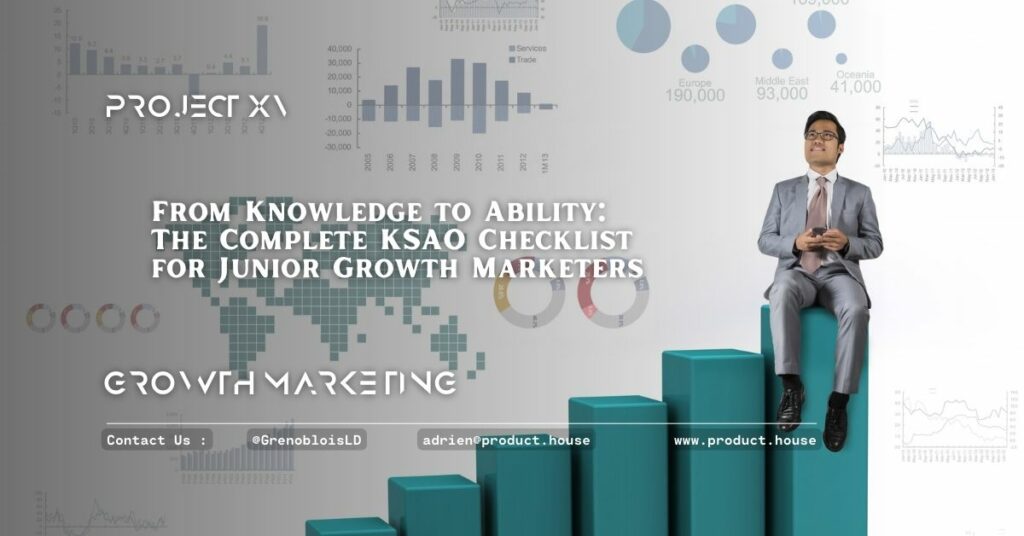60 Growth Marketing Glossary Terms for the Rest of Us

| # | Term | Definition |
|---|---|---|
| 1 | A/B Testing | Comparing two versions of a web page, app or campaign to determine which performs better |
| 2 | Acquisition | The process of attracting and gaining new customers or users for a product or service |
| 3 | Activation | The process of turning website or app visitors into active users who take a desired action |
| 4 | Ad Copy | The written text in a print or digital advertisement that encourages the reader to take an action |
| 5 | Ad Network | A platform that connects advertisers with websites or apps that host advertising |
| 6 | Ad Targeting | The practice of directing advertising to specific groups of people based on their demographics |
| 7 | Affiliate Marketing | A type of performance-based marketing in which a business rewards affiliates for each customer |
| 8 | Analytics | The measurement, collection, analysis and reporting of data for the purpose of optimizing outcomes |
| 9 | API | Application Programming Interface – a set of protocols and tools for building software applications |
| 10 | Attribution | The process of identifying which marketing activities contribute to a desired outcome or conversion |
| 11 | B2B | Business-to-Business marketing – marketing a product or service to other businesses |
| 12 | B2C | Business-to-Consumer marketing – marketing a product or service directly to consumers |
| 13 | Backlink | A link from one website to another, used to boost search engine rankings |
| 14 | Behavioral Targeting | The practice of directing advertising to specific individuals based on their browsing behavior |
| 15 | Brand Awareness | The extent to which a brand is recognized by potential customers and associated with its products |
| 16 | Call-to-Action (CTA) | A statement or button that prompts the user to take a specific action, such as “Sign Up Now” |
| 17 | Churn Rate | The rate at which customers stop using a product or service |
| 18 | Click-Through Rate (CTR) | The percentage of users who click on a specific link compared to the number of total users who view it |
| 19 | Cohort Analysis | Analyzing groups of users who share a common characteristic or experience |
| 20 | Competitive Analysis | Researching and analyzing the strengths and weaknesses of competitors in a market |
| 21 | Conversion Rate | The percentage of website or app visitors who complete a desired action, such as making a purchase |
| 22 | Cost per Action (CPA) | The amount spent to acquire a customer who completes a desired action, such as making a purchase |
| 23 | Cost per Click (CPC) | The amount spent each time a user clicks on a specific link or advertisement |
| 24 | Cost per Impression (CPM) | The amount spent per 1,000 views or impressions of a specific advertisement |
| 25 | CRM | Customer Relationship Management – managing customer interactions and relationships |
| 26 | Customer Acquisition Cost (CAC) | The cost of acquiring a new customer, typically calculated as the total cost of sales and marketing divided by the number of new customers acquired |
| 27 | Customer Lifetime Value (CLV) | The total value of a customer over their lifetime of engagement with a business, including all purchases and referrals |
| # | Term | Definition |
|---|---|---|
| 28 | Demographics | Data used to describe the characteristics of a population, including age, gender, income, education, and other relevant factors. |
| 29 | Engagement | The level of interaction between a user and a brand, product, or service. Engagement can be measured by various metrics, such as clicks, shares, etc. |
| 30 | Funnel | A model used to represent the customer journey from awareness to conversion. The funnel is divided into several stages, such as awareness, interest, consideration, intent, and purchase. |
| 31 | Gamification | The use of game design elements in non-game contexts to engage users and encourage desired behaviors. |
| 32 | Geotargeting | The practice of delivering content or advertising to a specific audience based on their geographic location. |
| 33 | Growth Hacking | An experimental approach to marketing that focuses on rapid experimentation, data analysis, and iterative product development to achieve growth. |
| 34 | Influencer Marketing | A form of marketing that involves leveraging the influence of individuals with a large following on social media to promote a product or service. |
| 35 | Key Performance Indicator | A metric used to evaluate the success of a marketing campaign or strategy. Common KPIs include conversion rates, click-through rates, and customer lifetime value. |
| 36 | Landing Page | A standalone web page designed specifically for a marketing campaign, with the goal of converting visitors into leads or customers. |
| 37 | Lead Generation | The process of attracting and capturing potential customers for a product or service. |
| 38 | Market Research | The collection and analysis of data related to a market, including size, competition, customer needs, and trends. |
| 39 | Microtargeting | The practice of delivering personalized content or advertising to a specific audience based on their interests, behaviors, or demographics. |
| 40 | NPS (Net Promoter Score) | A customer satisfaction metric that measures the likelihood of customers to recommend a product or service to others. |
| 41 | Organic Traffic | Traffic to a website that comes from search engines, social media, or other sources, rather than from paid advertising. |
| 42 | Paid Advertising | Advertising that involves paying to display promotional content on websites, search engines, social media, or other platforms. |
| 43 | Persona | A fictional character used to represent a specific segment of a target audience. Personas are based on data and insights related to customer behavior and demographics. |
| 44 | Retargeting | A form of online advertising that targets individuals who have interacted with a website or product in the past, with the goal of encouraging them to return and convert. |
| 45 | ROI (Return on Investment) | A metric used to evaluate the profitability of a marketing campaign or strategy. ROI is calculated by dividing the revenue generated by the cost of the campaign. |
| 46 | Segmentation | The process of dividing a target audience into smaller groups based on shared characteristics or behaviors. |
| 47 | SEO (Search Engine Optimization) | The practice of optimizing a website to improve its ranking on search engines, with the goal of increasing organic traffic. Optimization includes on-page and off-page factors, such as content, keywords, and backlinks. |
| # | Term | Definition |
|---|---|---|
| 48 | Social Proof | A psychological phenomenon where people conform to the actions and behaviors of others around them as a way of determining the correct course of action. In marketing, social proof is used to influence and convince customers to take certain actions. |
| 49 | Split Testing | A method of testing variations in marketing campaigns to determine the most effective approach. In split testing, different versions of a campaign are shown to different groups, and the results are compared to determine which version performs the best. |
| 50 | Target Audience | A specific group of people that a marketing campaign is designed to reach. The target audience is defined by factors such as demographics, psychographics, behavior, and interests, and is used to tailor marketing messages and campaigns to that specific group. |
| 51 | Thought Leadership | A marketing approach that establishes an individual or company as an authority or expert in their industry. By publishing content, offering insights, and participating in industry discussions, thought leaders can build a reputation and generate interest in their brand. |
| 52 | Top of Funnel | The initial stage of a marketing campaign, where the goal is to attract potential customers and generate awareness of a product or service. Top of funnel tactics include things like content marketing, social media advertising, and other awareness-building activities. |
| 53 | Unique Selling Proposition | The unique benefit or advantage that a product or service offers, which sets it apart from competitors. In marketing, the USP is used as a way to differentiate a product or service and appeal to customers who are looking for something specific. |
| 54 | User Acquisition | The process of acquiring new users or customers for a product or service. User acquisition is typically achieved through marketing and advertising efforts that are designed to attract new users and generate interest in the product or service. |
| 55 | User Experience (UX) | The overall experience that a user has when interacting with a product or service. UX encompasses all aspects of the user journey, including design, usability, functionality, and accessibility, and is used to create positive experiences that drive engagement and loyalty. |
| 56 | User Interface (UI) | The visual and interactive elements of a product or service that users interact with. UI design encompasses things like layout, typography, color, and other visual and interactive elements that are used to create an intuitive and engaging user experience. |
| 57 | Viral Marketing | A marketing approach that uses social networks and other online channels to spread a marketing message through word of mouth. Viral marketing is often used to create a buzz around a product or service and generate interest and engagement from potential customers. |
| 58 | White Hat | In the context of SEO, white hat refers to ethical and best-practice techniques for optimizing a website or content. White hat SEO practices include things like keyword research, on-page optimization, and link building that follow search engine guidelines. |
| 59 | WOM | Word of mouth, or the spread of information and opinions about a product or service from person to person. WOM is a powerful marketing tool, as people are more likely to trust and act on recommendations from people they know or respect than from traditional advertising. |
| 60 | Zero Moment of Truth | A concept that refers to the moment when a potential customer begins researching a product or service, typically through online channels. |





